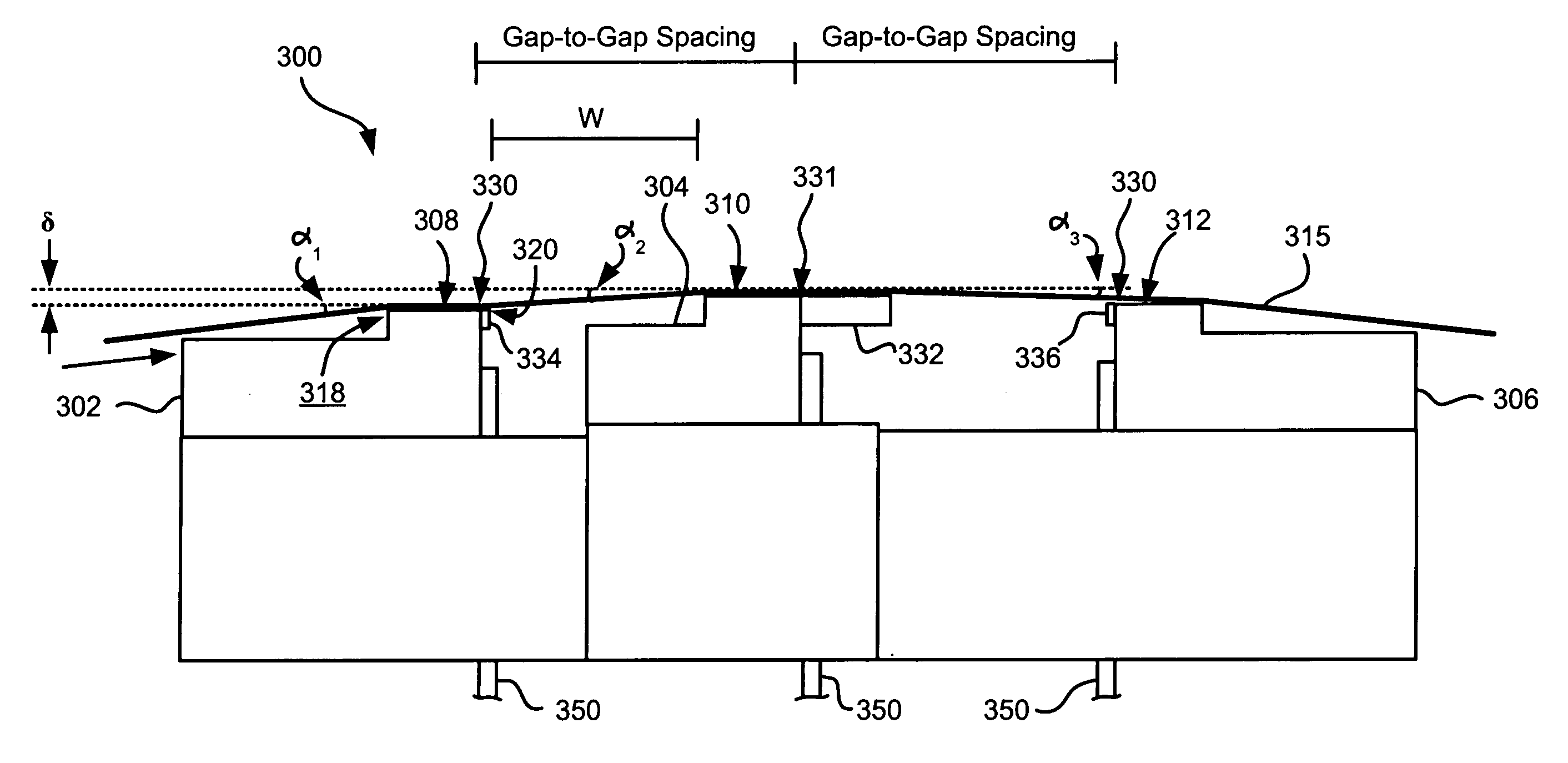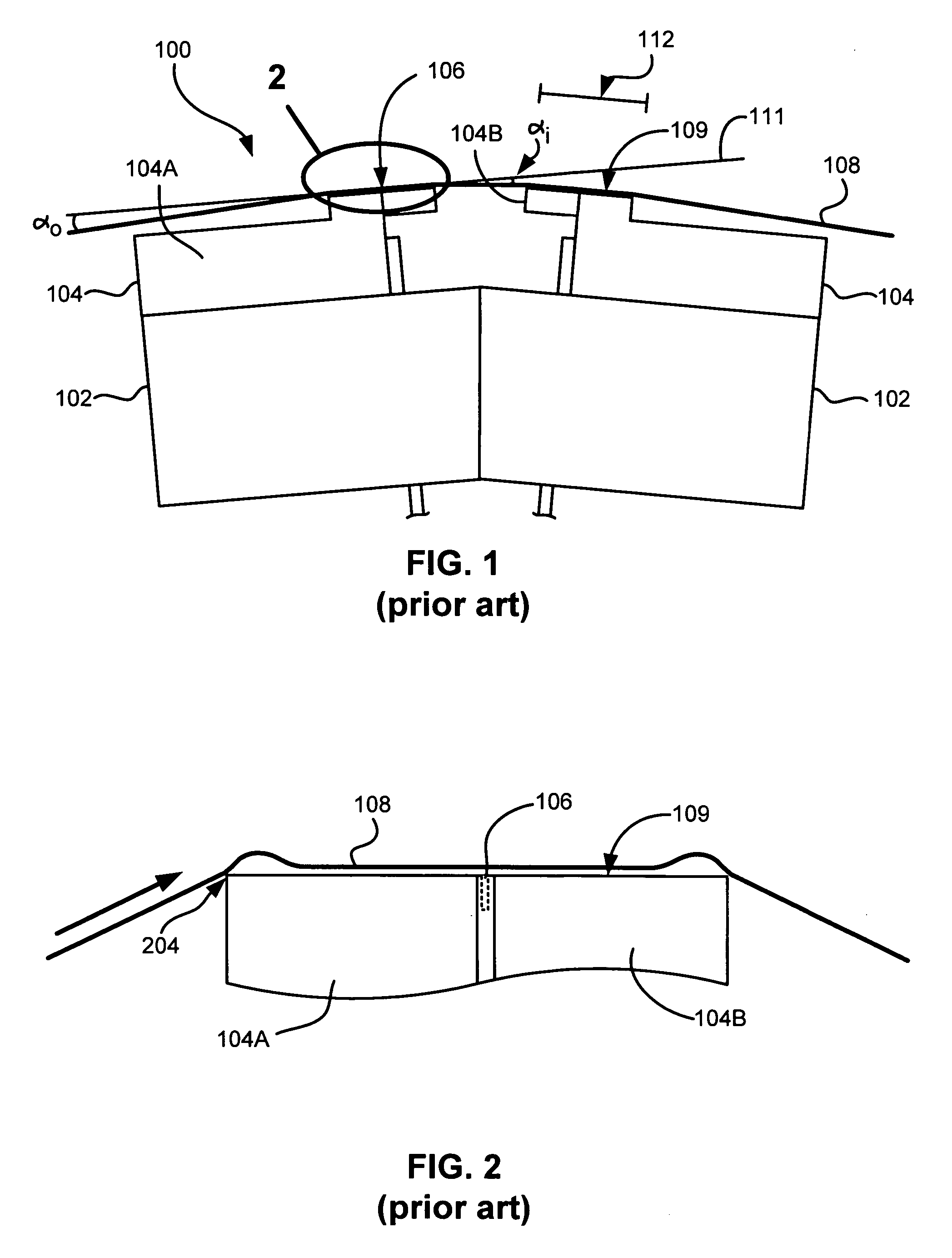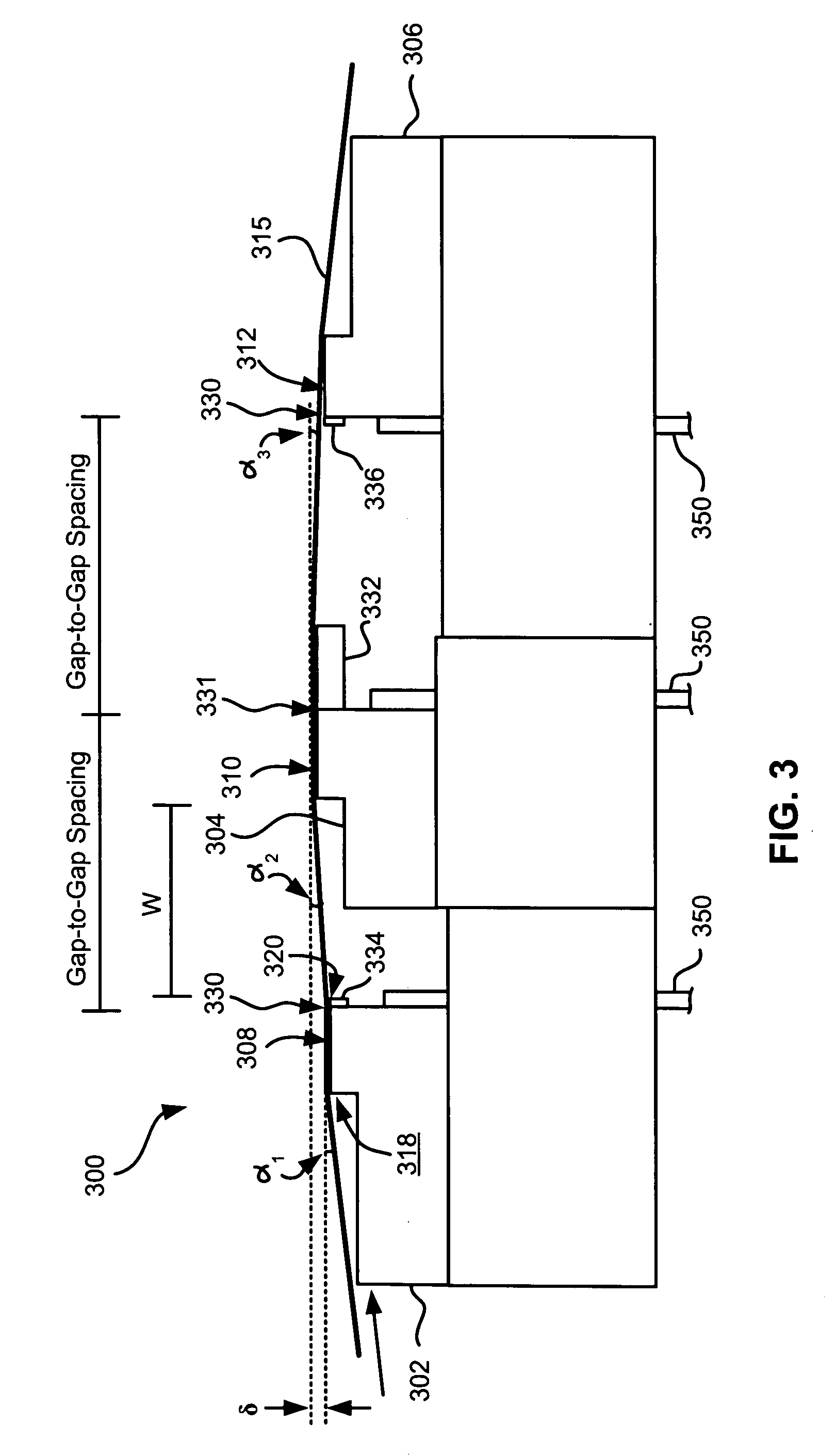Flat profile tape head
a tape head and flat profile technology, applied in the field of magnetic head structures, can solve the problems of tape not moving across the tape bearing surface perfectly linearly, dynamic skew, and misalignment of trailing readers with leading writers, and achieve the effect of reducing wear on the third modul
- Summary
- Abstract
- Description
- Claims
- Application Information
AI Technical Summary
Benefits of technology
Problems solved by technology
Method used
Image
Examples
embodiment 400
[0051] The outer wrap angles can also be set by outriggers. FIG. 4 illustrates an embodiment 400 where outriggers 402 are formed on the outer modules 302, 306.
[0052] The outriggers 402 control the outer wrap angle α1 of the tape 315 relative to the tape bearing surfaces 308 of the leading module 302. As shown, each outrigger 402 may have a flat tape bearing surface 404 that, like typical flat profile heads, induces a small spacing between a tape 315 passing thereover and its tape bearing surface 404. The outrigger 402 may lie on a parallel plane as the tape bearing surface of the associated module. In such an embodiment, the outrigger tape bearing surface 404 is positioned below the plane of the tape bearing surface of the associated element, thereby creating the proper wrap angle α1 of the tape 315 relative to the tape bearing surface of the associated module.
[0053] A benefit of this embodiment is that, because the outrigger 402 may be formed directly on the module, the outer wrap...
embodiment 500
[0056] Depending on tape tension and stiffness, it may be desirable to angle the tape bearing surfaces of the outer modules relative to the tape bearing surface of the second module. FIG. 5 illustrates an embodiment 500 where the modules 302, 304, 306 are in a tangent (angled) configuration. Particularly, the tape bearing surfaces of the outer modules 302, 306 are about parallel to the tape at the desired wrap angle α2 of the second module 304. In other words, the planes of the tape bearing surfaces 308, 312 of the outer modules 302, 306 are oriented at about the desired wrap angle α2 of the tape 315 relative to the second module 304. The inventor has found that the tape will also pop off of the trailing module 306 in this embodiment, thereby reducing wear on the elements in the trailing module 306. These embodiments are particularly adapted for write-read-write applications. Additional aspects of these embodiments are similar to those given above.
embodiment 600
[0057]FIG. 6 illustrates an embodiment 600 where the modules 302, 304, 306 are in an overwrap configuration. Particularly, the tape bearing surfaces 308, 312 of the outer modules 302, 306 are angled slightly more than the tape 315 when set at the desired wrap angle α2 relative to the second module 304. In this embodiment, the tape does not pop off of the trailing module, allowing it to be used for writing or reading. Accordingly, the leading and middle modules can both perform reading and / or writing functions while the trailing module can read any just-written data. Thus, these embodiments are preferred for write-read-write, read-write-read, and write-write-read applications. In the latter embodiments, closures should be wider than the tape canopies for ensuring read capability. The wider closures will force a wider gap-to-gap separation. Therefore the preferred embodiment has a write-read-write configuration, which may use shortened closures that thus allow closer gap-to-gap separa...
PUM
 Login to View More
Login to View More Abstract
Description
Claims
Application Information
 Login to View More
Login to View More - R&D
- Intellectual Property
- Life Sciences
- Materials
- Tech Scout
- Unparalleled Data Quality
- Higher Quality Content
- 60% Fewer Hallucinations
Browse by: Latest US Patents, China's latest patents, Technical Efficacy Thesaurus, Application Domain, Technology Topic, Popular Technical Reports.
© 2025 PatSnap. All rights reserved.Legal|Privacy policy|Modern Slavery Act Transparency Statement|Sitemap|About US| Contact US: help@patsnap.com



